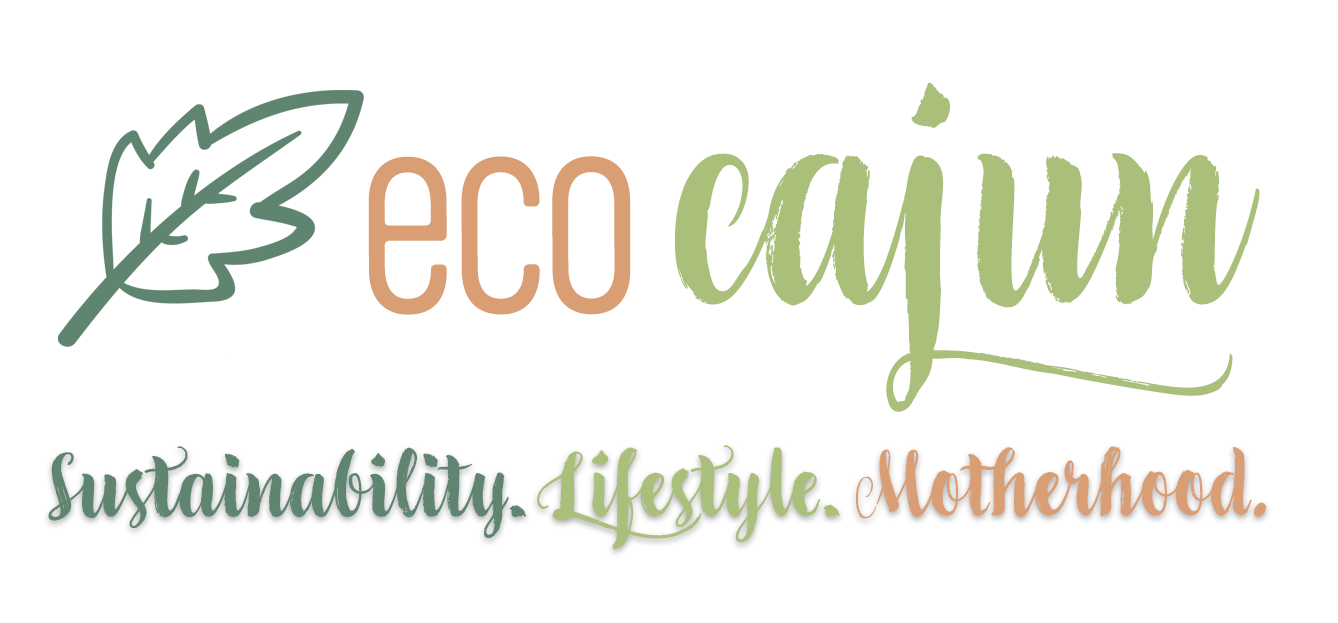Welcome to the second weekly installment of the eco cajun Christmas series. This week focuses on decorating, or as I will henceforth call it, Griswold Goes Green.
There's a Lowe's ad this year that promotes Lowe's saving and tracking purchase histories, so people can know how many decorations they bought the previous year, so you'll be able to "get the same great look again this year". Except, there should be no need to buy an entirely new set of identical Christmas decorations one year later. The first thing you can do to be greener about your holiday decorating is to use what you already have!
Photo: A little musical house that has been part of my parents' decorations since I was about three. And now it's mine, muahaha...
If you do buy new decorations, make a trade out of it. For every new thing you purchase, get rid of one old thing. And donate your old decorations to Goodwill, or even possibly churches, schools or retirement homes.
If you aren't already using LED Christmas lights, make the switch! The lights are more expensive than regular Christmas lights, but since they use much less energy, the overall cost balances out. Eventually, the LEDs will have paid for themselves. LEDs don't get as hot as regular lights, making them less of a fire hazard. These days, LED lights come in a wide variety of colors, sizes and shapes, for both indoor and outdoor.
And for outdoor lighting, go one step further into solar-powered Christmas lights. The past few years I've been in an apartment with no outdoor electrical source, and I refuse to (what I classily call it) ghetto-rig an extension cord inside to power Christmas lights. So I bought a string of solar-powered icicle lights, and they worked great for about three years. This year, they don't seem to be charging and lighting, so now I have the task of figuring out how to dispose of non-working lights. In the meantime, I adopted four solar snowflakes!
For the inside of your home, consider crafting your own decorations. Pinterest is always a great source for craft ideas, but sometimes, even shopping can be a source of inspiration. I recently saw some cable-knit cone-shaped trees at the store, but decided to try crafting one myself instead of buying one (especially since I knew the cone was made of styrofoam.) I plan on making one out of some spare pieces of cardboard and an old thermal shirt. This year, I also picked up a few $1 ornaments at the store and crafted my own garland with it. Even I'm impressed with how well it turned out! Crafts can be a great way to involve your children or family in decking the halls.
A few years ago, I even made paper snowflakes out of junk mail and brown shipping paper. Reuse!
And then there's the great debate on which is more eco-friendly: real or artificial Christmas trees? Real trees are really only able to be used once, and artificial trees are usually made out of toxic materials. The Daily Green posted a few years ago about green Christmas tree options. Conventional live trees are grown on farms, so they don't contribute to deforestation, but they must be
shipped long distances, which requires lots of fuel for the trucks and
pesticides for the trees, and can take up space in landfills if people
don't turn them into compost or recycle them somehow.
Artificial
trees are primarily made in China of oil-derived PVC. Many of these have been found to contain lead, and
according to another source, the USDA quarantined some Chinese
artificial trees for containing a potentially harmful beetle in the
center pole. The average family keeps their artificial tree six to
nine years before throwing them away to live forever in a landfill. This
leads me to think part of the reason people do not keep artificial
trees longer is due to the changes in tree features - such as how
pre-lit trees are commonplace now. And trees that come with lights built
in are assuredly not recyclable.
Every January in South Louisiana, the yard waste
company would pick up all real Christmas trees and deliver them to the
eroding wetlands, so really, the trees get to have a use all year long
in saving our coastline. I would rather that than having to throw out a
non-recyclable artificial tree if it wasn't able to be used any more. I believe the tree recycling doesn't happen anymore, but it's not to say the practice can't be used elsewhere.
I am personally a real-tree supporter, because nothing beats the wonderful smell, and because buying a tree each year was (and still is) a tradition in my family. But when I was younger, for about 15 years, I had a small artificial tree that I would decorate for my bedroom. I finally got rid of the poor thing this year (because two trees in a one-bedroom apartment is a little overkill, even for me), but I brought it to Goodwill, so hopefully someone else will get to enjoy it this year.
But whatever tree you use, there's the issue of what kind of tree skirt to dress it up with. A great eco-friendly option is to use recycled fabric. For some reason, I always had some extra red fabric lying around. When it came time for me to need a tree skirt, I discovered the red fabric was the perfect shape. All I have to do is put it down and adjust where needed. If you like to sew, you can go a little further, and use recycled sweaters or t-shirts, or any other leftover fabric! Just the fabric into larger squares and sew them together. If you prefer to buy one, look for one made of organic or recycled materials.
When you decorate, remember to be energy-efficient, look for eco-friendly materials and reuse where you can!





No comments